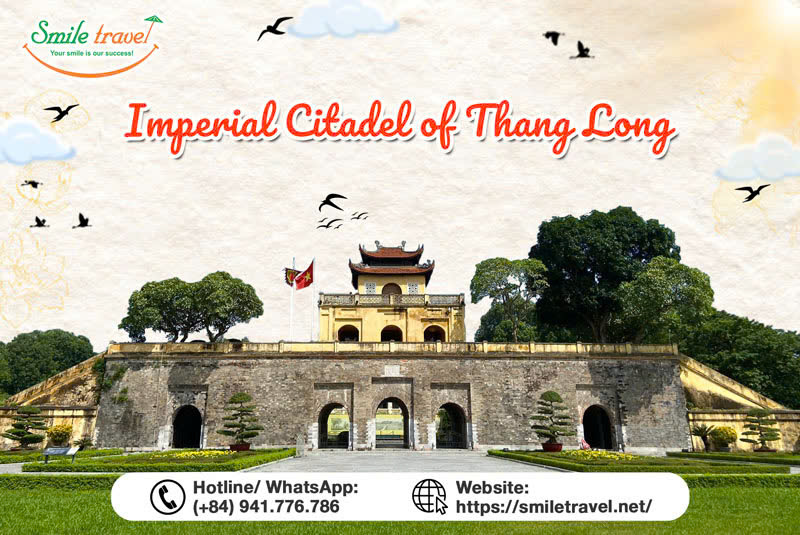
- On 30/10/2024
- In Travel Blog
- Tags: Imperial Citadel of Thang Long, imperial citadel of thang long entrance fee, imperial citadel of thang long hanoi, imperial citadel of thang long opening hours, imperial citadel of thang long reviews, imperial citadel of thang long tickets, imperial citadel of thang long tour, Thang Long Imperial Citadel
Things you need to know about the Imperial Citadel of Thang Long
Hanoi is now a modern city but still retains the traditional features of Vietnamese culture. The city has many modern architectural works, but there are still old streets, red tile-roofed houses imbued with Vietnamese identity, and long-standing historical and cultural relics. And we cannot help but mention the Imperial Citadel of Thang Long – a complex of relics associated with the history of Thang Long capital, Hanoi. So when you have the opportunity to come to Hanoi, visit the Thang Long Imperial Citadel to learn all about the unique features of this place.
Tourist can refer to some North Vietnam Tours recommended by Smile Travel below:
>> Tour in Hanoi – Sapa – Halong 5D4N
>> Tour 2D/1N Hanoi – Trang An – Bai Dinh Pagoda – Tam Coc
>> Trekking Tour 2 Days in Sapa – Y Linh Ho – Lao Chai – Ta Van- Cat Cat – Sin Chai
Let’s explore the Imperial Citadel of Thang Long together!
1. Some informations about The Imperial Citadel of Thang Long Hanoi
Currently, this relic complex is located in Dien Bien Phu and Quan Thanh wards with a total area of the central area of up to 18.3 hectares. The easiest address to find on the map of Thang Long Imperial Citadel is 19C Hoang Dieu, Ba Dinh, Hanoi – the main gate of the relic site. It will be open from 8:00 to 17:00 every day and the Imperial Citadel of Thang Long entrance fee to this relic is 70,000 VND/person/time (about 3 USD).
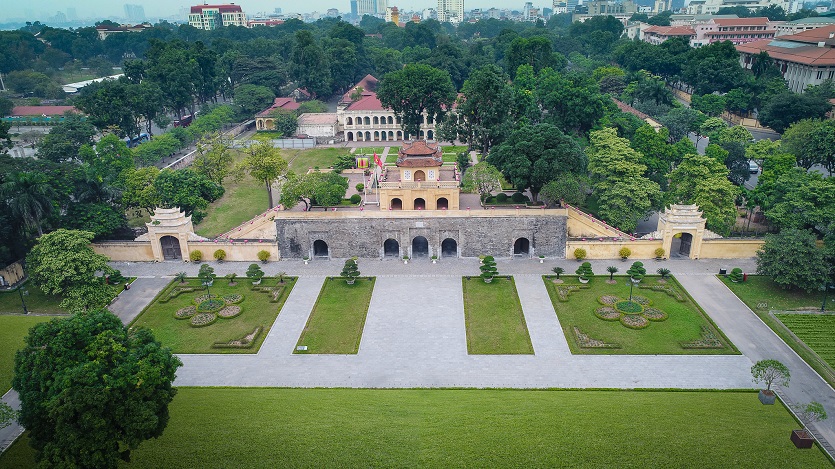
Overview Imperial Citadel of Thang Long
Because it is located in the political center of Ba Dinh district, the Imperial Citadel is very close to the headquarters centers of Vietnam such as:
- North is Phan Dinh Phung street.
- To the south is the National Assembly building – Where important meetings of the National Assembly take place, and located near Bac Son Street.
- To the southwest is Dien Bien Phu street.
- The West side is the National Assembly House, Hoang Dieu Street, Doc Lap Street.
- To the East is Nguyen Tri Phuong street.
At 8:30 p.m on July 31, 2010 local time in Brazil, or 6:30 a.m on August 1, 2010 Vietnam time, the World Heritage Committee passed a Resolution recognizing the Imperial Citadel of Thang Long Hanoi is a World Cultural Heritage. This is the pride not only of Hanoi but also of the whole country of Vietnam. Therefore, visiting a place imbued with traditional Vietnamese culture like this will certainly be an interesting and memorable experience for visitors.
To get to Thang Long Imperial Citadel, in addition to walking, riding a cyclo or traveling by personal means such as motorbikes or bicycles, visitors can catch a taxi or take public transportation such as buses number: 09A, 22A, 23, 45, 50.
Thang Long Imperial Citadel relic area includes the following 7 main areas: Hanoi flag tower, Doan Gate, Kinh Thien Palace, Revolutionary House D67, Lady Pavilion, North Gate and Archaeological relic site. Each area has its own unique architectural works that will surprise you and are worth exploring.
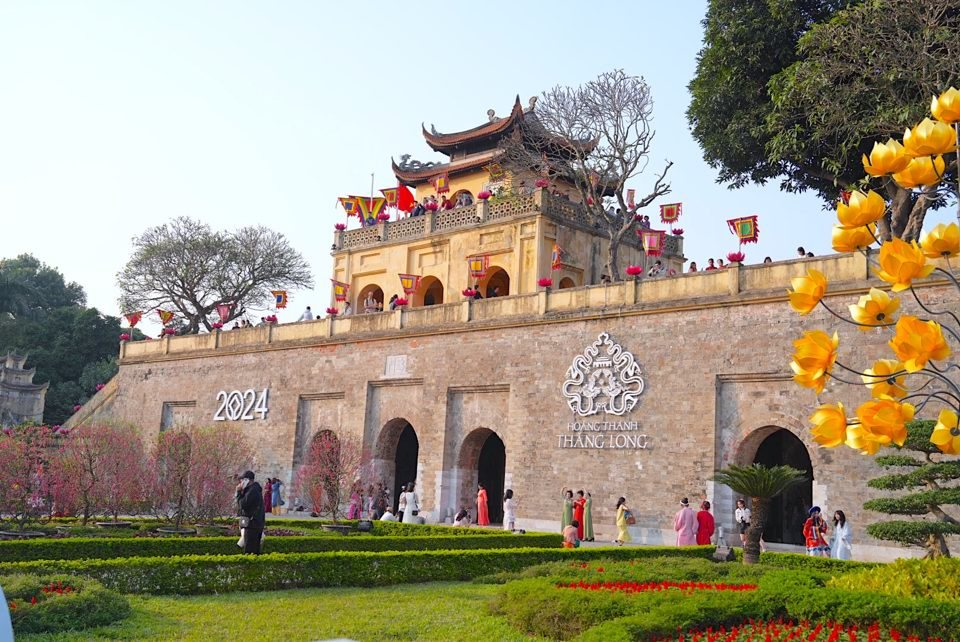
Imperial Citadel of Thang Long in Spring
2. Explore unique works in Imperial Citadel of Thang Long
Hanoi flag tower
The Hanoi flagpole belongs to the Imperial Citadel of Thang Long relic area, but is located in a separate area compared to the other 6 areas. It is the most intact and majestic building in the Imperial Citadel of Thang Long Complex. The flagpole includes 3 base levels and 1 body. The base floors have a truncated square pyramid shape, surrounded by bricks and gradually get smaller from the lower floor to the upper floor. To get to the floors, you will step through the stairs. Reaching the last floor, visitors will admire the 18.2m Hanoi flagpole, eight-sided cylindrical shape, tapering upward. Inside the body there will be 54 steps to reach the top. At the top, there is a circular cylinder to place the flag staff. The image of the red flag with a yellow star on top fluttering in the wind is like a pride of all Vietnamese people.
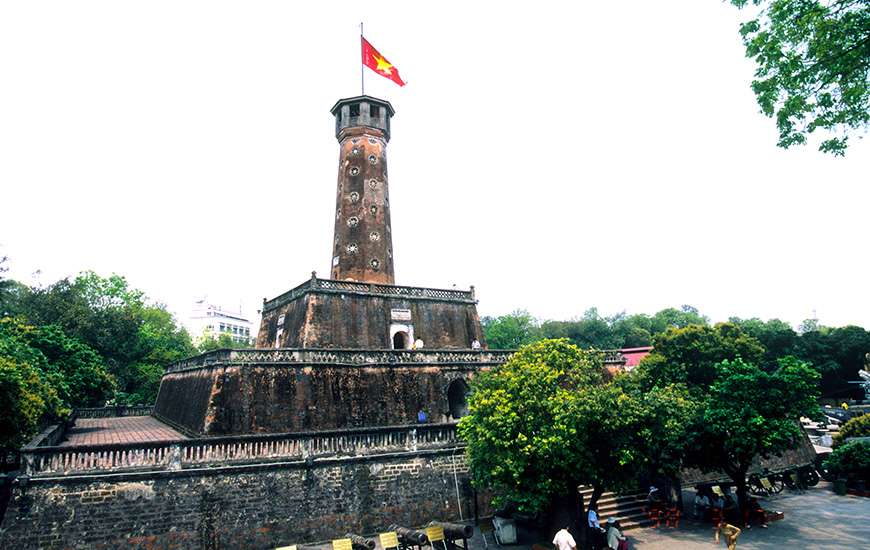
Hanoi flag tower
Doan Mon (The Main Gate)
Doan Mon is located south of Kinh Thien Palace, straight with the Hanoi Flag Tower. With its massive and imposing architecture, Doan Mon is one of the main gates leading to the Forbidden City – the living and working place of the king and royal family in the past. Built during the Le Dynasty and renovated over time, Doan Mon is like a historical witness, marking the ups and downs of a thousand-year-old capital of civilization.
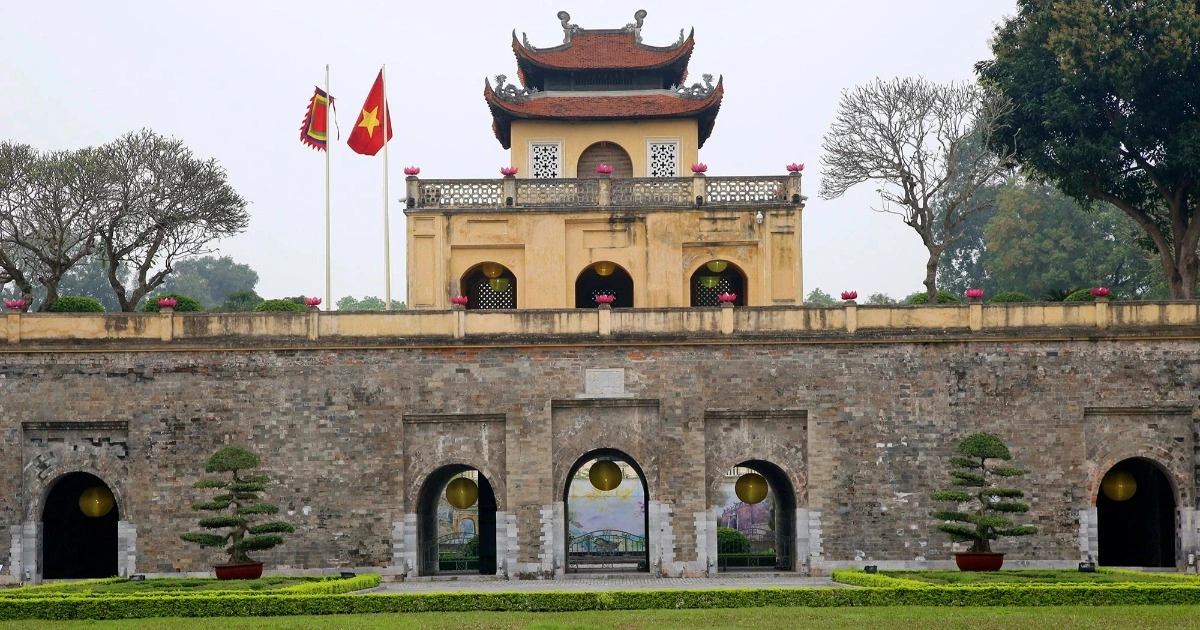
Doan Mon Gate
The structure of Doan Mon is quite special with a U shape, stretching from East to West. The gate has 5 arches, of which the main arch in the middle is reserved for the king. The remaining arches are used for mandarins and people. With this architecture, it is not only a city gate but also a symbol of power and majesty.
When passing through Doan Mon, visitors will feel the solemn and ancient atmosphere of a bygone era. Thick brick walls, intricate patterns on the columns, roof… all bear the mark of time.
Kinh Thien Palace
Kinh Thien Palace is the central and most important architectural work of Thang Long Imperial Citadel, where solemn royal ceremonies took place, where the king held court and received envoys. With its massive and imposing architecture, Kinh Thien Palace is like the heart of the entire relic complex, demonstrating the power and prosperity of the Le court.
Built on the foundation of the palace of the Ly – Tran dynasties, Kinh Thien Palace has a wooden structure, lacquered with gold, bearing bold Vietnamese royal architecture. The palace has 9 compartments, 6 rows of columns, with a system of delicately carved trusses and lotus joints, creating a large and magnificent space.
The interior of the palace is decorated according to royal etiquette, with wooden and bronze utensils and parallel horizontal panels bearing bold traditional culture. Kinh Thien Palace is not only a place where political activities take place but also a place to worship gods, expressing the beliefs of Vietnamese people. Coming here, visitors can not only admire a unique architectural work but also learn about the history and culture of Thang Long – Hanoi.
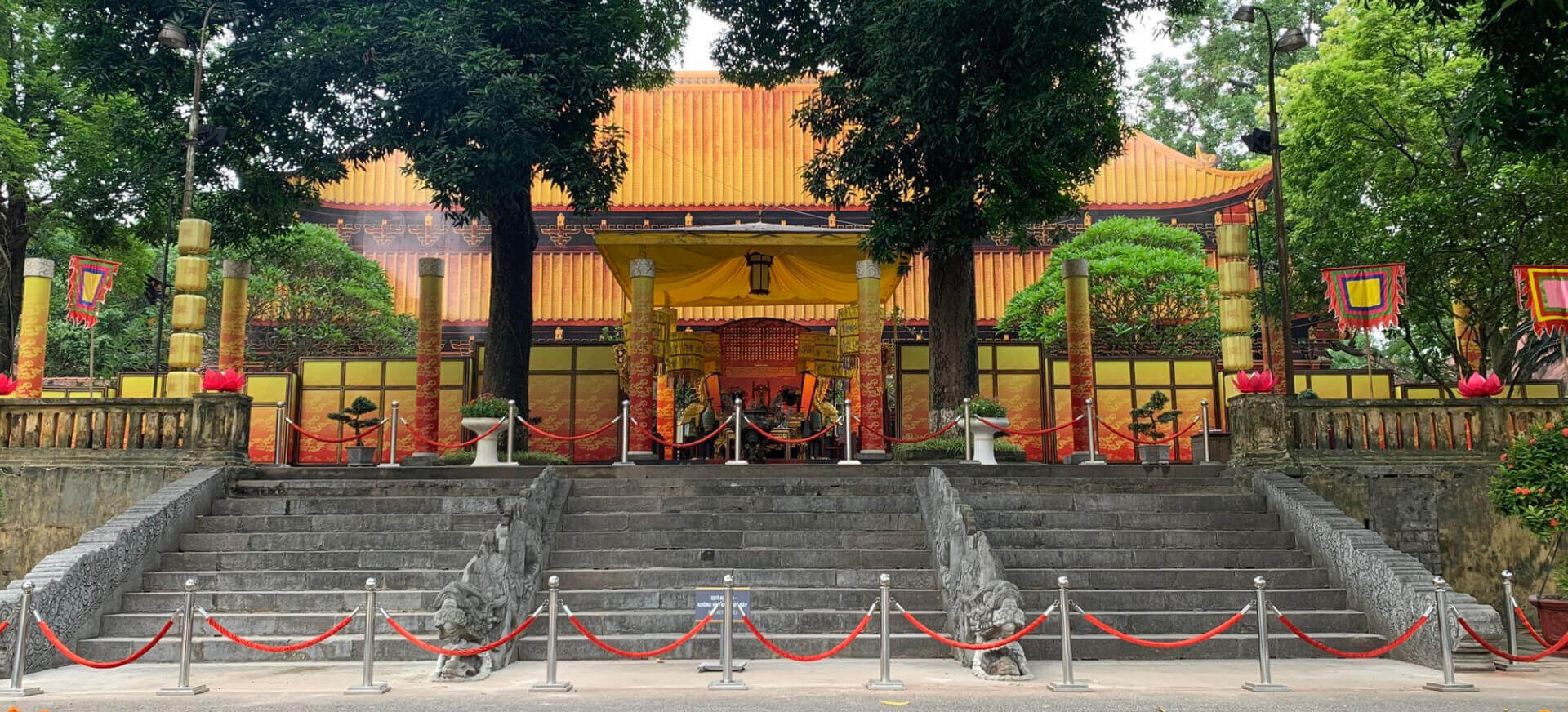
Kinh Thien Palace
D67 Revolutionary House
D67 Revolutionary House is a military structure built in 1967, nestled in the heart of Thang Long Imperial Citadel.
From the outside, D67 House looks quite simple, like a normal flat-roofed house. However, inside there are hidden secrets and enormous historical value. With a thick wall structure, solid door system, and good sound insulation, the house has ensured absolute safety for meetings and war direction activities of the Politburo.
If you’re worried that you won’t be able to fully understand the historical values here, don’t worry, our tour guide will explain it to you in detail.
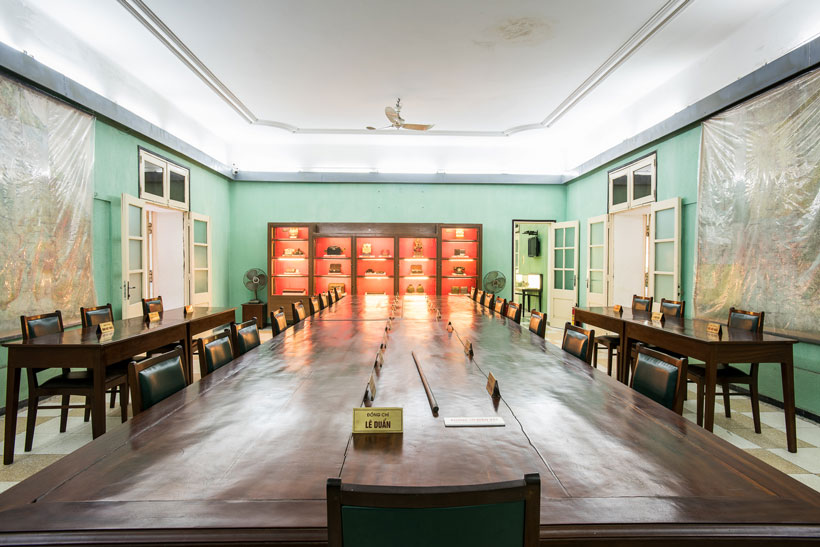
D67 House
Hau Lau (Lady Pavilion) – where East – West architecture intersects
Lady Pavilion, also known as Tinh Bac Lau, is one of the unique architectural works of Thang Long Imperial Citadel. Located in the southwest of the citadel, Hau Lau was built in the 18th century and has unique features of the interference between Eastern and Western architecture.
With a large area, Hau Lau has a unique structure with 5 interwoven roof floors. The bottom floor has 3 roof floors, the upper floor has only 2 roof floors. The roof is covered with imitation tube tiles and plastered with cement mortar, creating a beauty that is both ancient and modern.
Through many ups and downs of history, Hau Lau still retains its unique architectural features and special cultural and historical values. Today, Hau Lau is a destination that attracts a large number of tourists. Coming here, visitors can not only admire a unique architectural work but also learn about the history and culture of the nation, and about the life of the aristocracy in the ancient royal court.
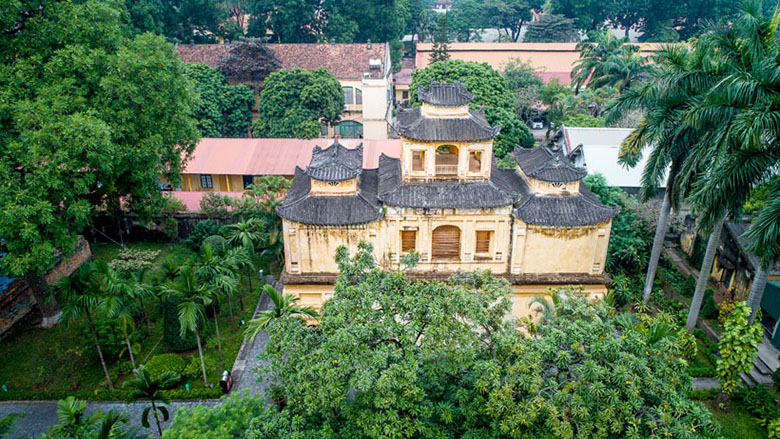
Hau Lau
North Gate – Historical witness of Thang Long
The North Gate, also known as Bac Mon, is one of the few remaining city gates of ancient Hanoi. Built in the 19th century on the foundation of an old citadel gate, the North Gate carries with it heroic historical traces and unique architecture.
With a typical gazebo architecture, it has an upper floor and a lower wall. The floor is built of wood, has a tiled roof, and has doors in four directions. The wall is built of bricks, has great thickness, showing solidity and solidity.
The North Gate is not only an architectural work but also a historical witness of the heroic battles of Hanoi’s army and people. The traces of artillery shells still imprinted on the city wall are clear evidence of those heroic days.
Please visit and take meaningful commemorative photos at the North Gate!
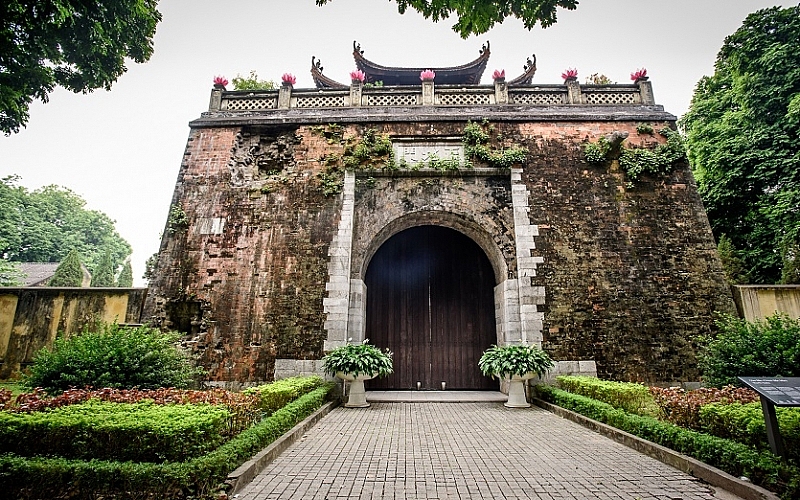
North Gate
Archaeological relic site – A place where history goes deep
Thang Long Imperial Citadel Archaeological Area is one of the most attractive destinations of this relic complex, where archaeologists have been exploring and excavating to learn about the formation and development process of Thang Long – Hanoi through the ages.
Located deep underground, the archaeological site has revealed overlapping layers of culture, from prehistoric times to the Ly, Tran, Le, and Nguyen dynasties. Archaeologists have found many precious artifacts such as ceramics, jewelry, labor tools, ancient architecture… All of which contribute to recreating a vivid picture of life, production and culture. culture of the people of ancient Thang Long.
In particular, the archaeological site at 18 Hoang Dieu has brought unexpected discoveries with the column foundation system of palaces and palaces of the Ly – Tran dynasties. These architectural vestiges not only show the majestic scale of the ancient citadel but also demonstrate the high level of construction techniques of the ancient Vietnamese.
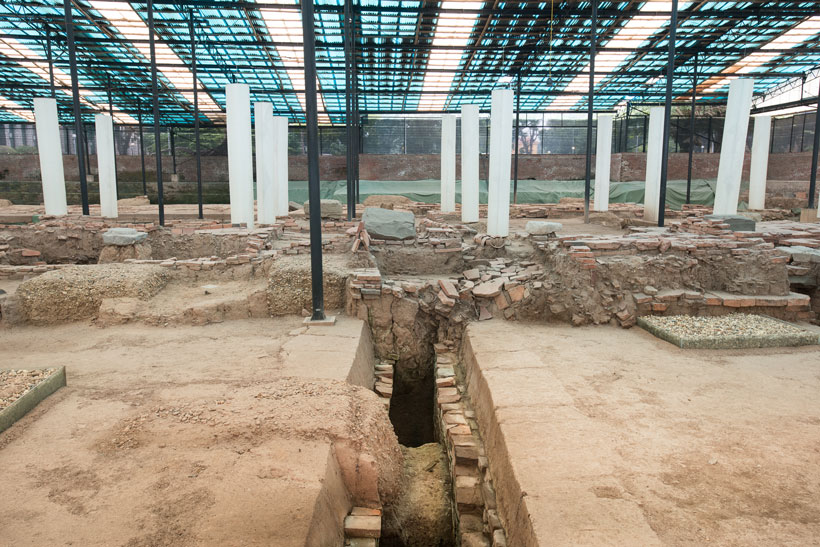
Archaeological relic site
3. Experiences when visiting Imperial Citadel of Thang Long
Some experiences for visitors:
At any time of the year, you can visit the Imperial Citadel. However, from May to August, the weather in Hanoi is often hot, so to have a healthy and happy trip, visitors can bring umbrellas, hats and lots of water with them. okay. Spring is warm and autumn is cool, which are the two most suitable times to visit this place. Note that the Thang Long Imperial Citadel relic area is very large, so you need to be in good health to be able to explore every corner here on foot.
Visitors need to comply with the regulations of the relic site such as:
- Take a tour according to the guided map
- Do not bring explosives, toxic substances or substances with a fishy odor into the relic
- You need to wear neat and polite clothes, and not engage in unethical behavior such as swearing, causing disorder, drawing graffiti on the wall, etc.
- There needs to be a sense of protecting relics and relics in the Imperial Citadel
- Do not use drones at the heritage site
…
Besides, visitors can flexibly combine visits to tourist attractions around the Imperial Citadel of Thang Long such as: Ho Chi Minh Mausoleum, One Pillar Pagoda, Temple of Literature, Hanoi Cathedral, etc. .. Each location has its own cultural and historical beauty, promising to bring visitors many new and unique experiences.
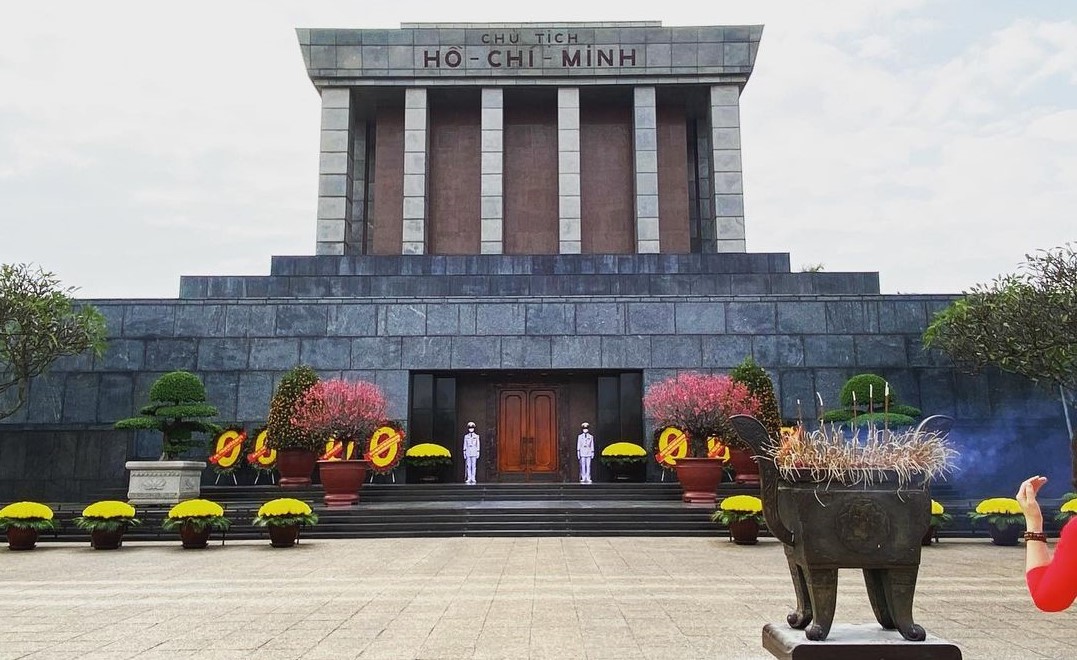
Ho Chi Minh Mausoleum
Visit the Imperial Citadel of Thang Long, on each special occasion visitors will experience different activities. In addition to admiring many precious artifacts at the archaeological site, participating in events, art and historical exhibitions, the relic site also especially leaves an impression on visitors with the night tour “Decoding the Imperial City”. “Thang Long” departs from 7:00 p.m. and lasts 1.5 hours, with an itinerary starting from Doan Mon with activities such as: being immersed in the royal dance, admiring the artifacts found at the Imperial Citadel, enjoying Drink lotus tea, offer incense,… and the last tourist attraction will be the Archaeological Site at 18 Hoang Dieu. At the end of the night tour, there will be a game of Decoding Thang Long Imperial Citadel for all visitors. Some typical artifacts of the Imperial Citadel will be displayed by laser on archaeological remains or on ancient waterways for visitors to learn and answer. Interesting details and decoding hints will be revealed during the tour. The night tour is only open on Friday and Saturday nights every week with an entrance fee of 300,000 VND/person (about 13 USD).
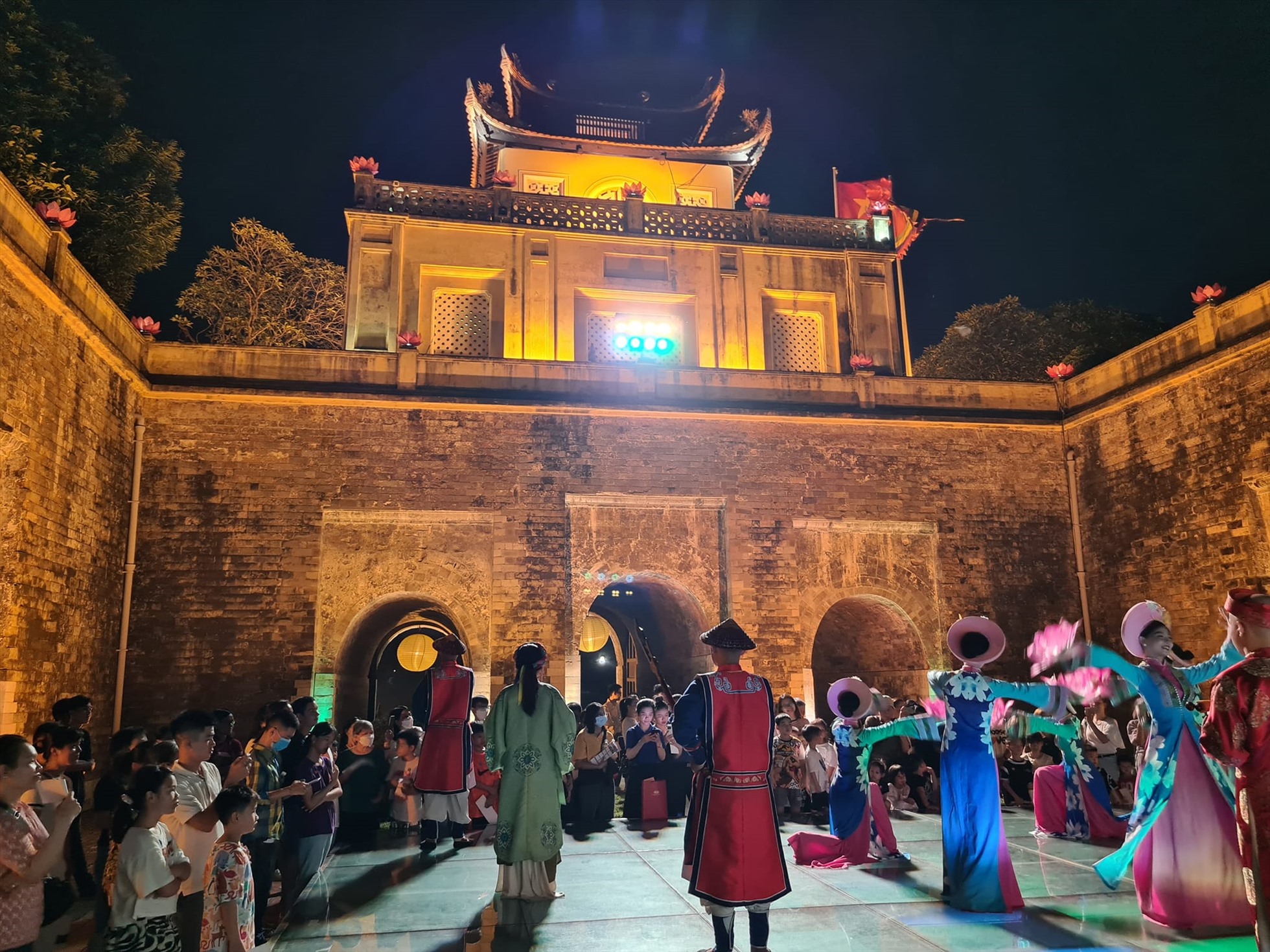
Imperial-Citadel-of-Thang-Long-night-tour
Don’t hesitate any longer, add the Imperial Citadel of Thang Long to your travel notebook when you set foot in Hanoi, Vietnam right away.
Above, Smile Travel has provided some basic information about a World Cultural Heritage named Imperial Citadel of Thang Long for tourists, hoping to help visitors. Smile Travel is also one of the leading travel agencies in building tours throughout Vietnam, even for Muslim tourists. Please connect with us via Hotline/ WhatsApp/ Viber: (+84) 941.776.786 for 24/7 support!
Smile Travel is one of the fast growing Tour Companies in Vietnam. We are as Inbound and Outbound Tour Operator Licence No 01-1051/TCDL-GPLHQT. We specialize in tailor-making and customizing individual, Couple, family and group tours throughout Indochina destinations.
Our Tour:
Halong Cruises Tours, Vietnam Classic Tours, Hanoi Daily Tours, Danang Daily Tours, Ho Chi Minh Daily Tours, Biking and Motorbike Tours,Vietnam Beach/ Relaxing Tours,Vietnam Muslim tour in Hanoi,Vietnam Muslim tour in Danang ,Vietnam Muslim tour in Ho Chi Minh,Vietnam Eco Tours,Vietnam- Laos Tours,Vietnam- Cambodia Tours,Vietnam- Myanmar Tours,
Our Travel Services:
Tour Guide, Car/Motorbike For Rent, Visa to Vietnam, Bus Tickets, Bus Tickets, Flight Tickets, Train Tickets
--------------------------------------------------
